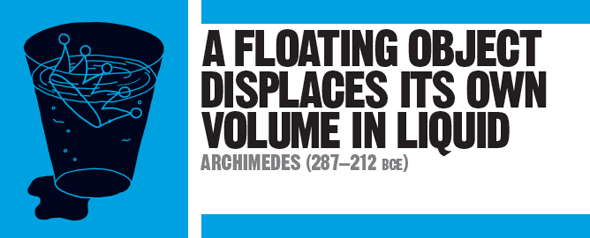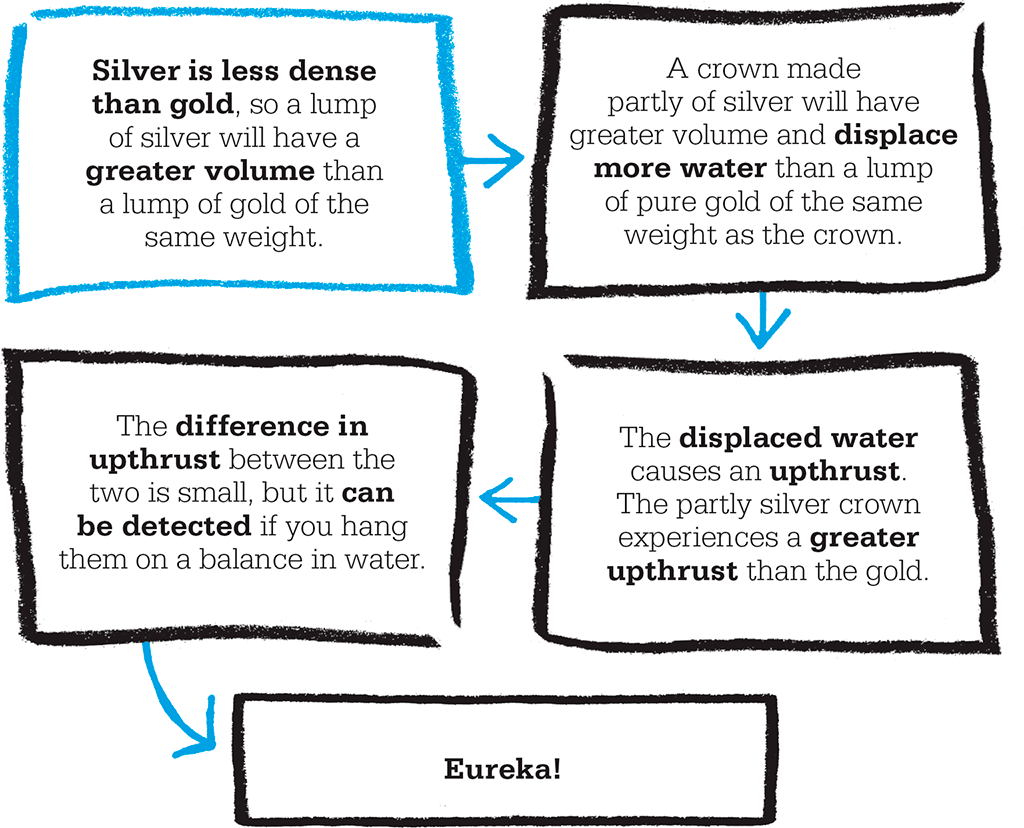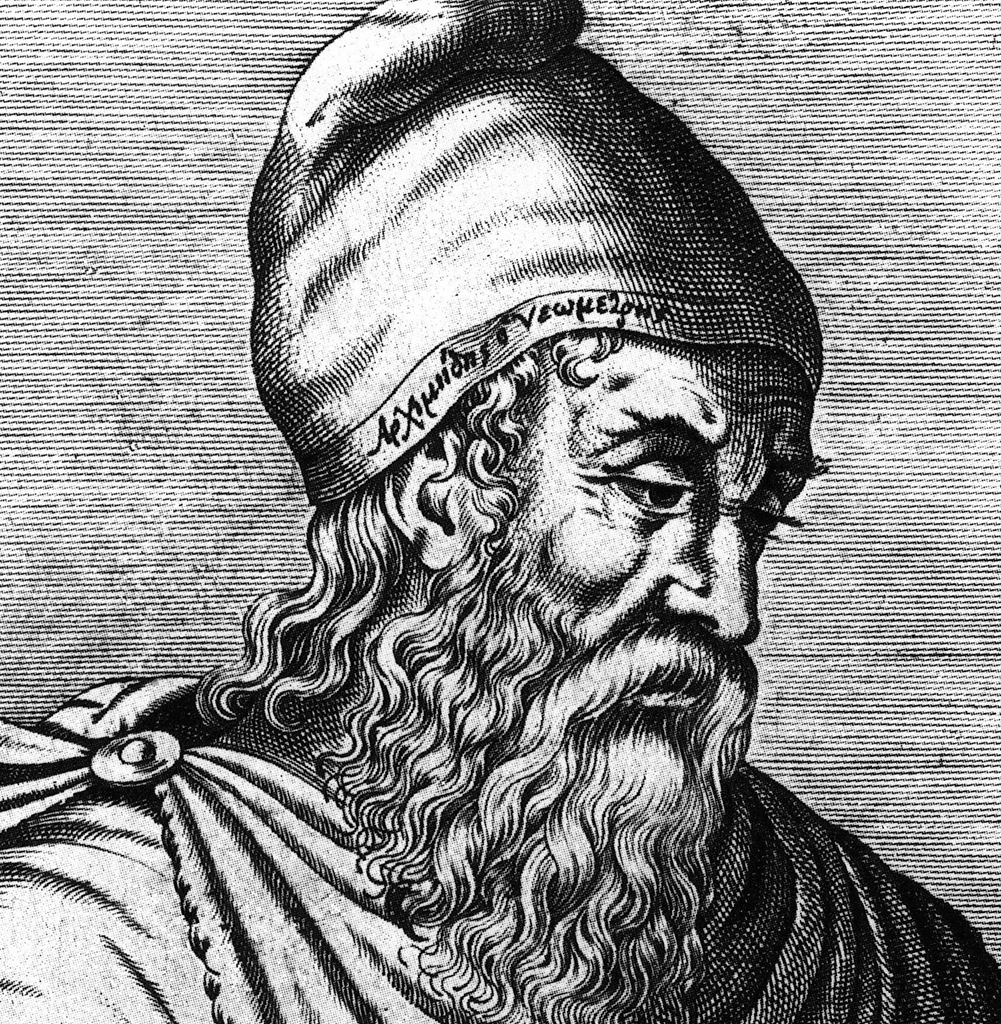
IN CONTEXT
Physics
3rd millennium BCE Metalworkers discover that melting metals and mixing them together produces an alloy that is stronger than either of the original metals.
600 BCE In ancient Greece, coins are made from an alloy of gold and silver called electrum.
1687 In his Principia Mathematica, Isaac Newton outlines his theory of gravity, explaining how there is a force that pulls everything towards the centre of Earth – and vice versa.
1738 Swiss mathematician Daniel Bernoulli develops his kinetic theory of fluids, explaining how fluids exert pressure on objects by the random movement of molecules in the fluid.
The Roman author Vitruvius, writing in the 1st century BCE, recounts the possibly apocryphal story of an incident that happened two centuries earlier. Hieron II, the King of Sicily, had ordered a new gold crown. When the crown was delivered, Hieron suspected that the crown-maker had substituted silver for some of the gold, melting the silver with the remaining gold so that the colour looked the same as pure gold. The king asked his chief scientist, Archimedes, to investigate.
Archimedes puzzled over the problem. The new crown was precious, and must not be damaged in any way. He went to the public baths in Syracuse to ponder the problem. The bath was full to the brim, and when he climbed in, he noticed two things: the water level rose, making some water slop over the side, and he felt weightless. He shouted “Eureka!” (I have found the answer!) and ran home stark naked.

Measuring volume
Archimedes had realized that if he lowered the crown into a bucket brimful with water, it would displace some water – exactly the same amount as its own volume – and he could measure how much water spilled out. This would tell him the volume of the crown. Silver is less dense than gold, so a silver crown of the same weight would be bigger than a gold crown, and would displace more water. Therefore, an adulterated crown would displace more water than a pure gold crown – and more than a lump of gold of the same weight. In practice, the effect would have been small and difficult to measure. But Archimedes had also realized that any object immersed in a liquid experiences an upthrust (upwards force) equal to the weight of the liquid it has displaced.
Archimedes probably solved the puzzle by hanging the crown and an equal weight of pure gold on opposite ends of a stick, which he then suspended by its centre so that the two weights balanced. Then he lowered the whole thing into a bath of water. If the crown was pure gold, it and the lump of gold would experience an equal upthrust, and the stick would stay horizontal. If the crown contained some silver, however, the volume of the crown would be greater than the volume of the lump of gold – the crown would displace more water, and the stick would tilt sharply.
Archimedes’ idea became known as Archimedes’ principle, which states that the upthrust on an object in a fluid is equal to the weight of the fluid the object displaces. This principle explains how objects made of dense material can still float on water. A steel ship that weighs one tonne will sink until it has displaced one tonne of water, but then will sink no further. Its deep, hollow hull has a greater volume and displaces more water than a lump of steel of the same weight, and is therefore buoyed up by a greater upthrust.
Vitruvius tells us that Hieron’s crown was indeed found to contain some silver, and that the crown-maker was duly punished.
"A solid heavier than a fluid will, if placed in it, descend to the bottom of the fluid, and the solid will, when weighed in the fluid, be lighter than its true weight by the weight of the fluid displaced."
Archimedes
ARCHIMEDES

Archimedes was possibly the greatest mathematician in the ancient world. Born around 287 BCE, he was killed by a soldier when his home town Syracuse was taken by the Romans in 212 BCE. He had devised several fearsome weapons to keep at bay the Roman warships that attacked Syracuse – a catapult, a crane to lift the bows of a ship out of the water, and a death array of mirrors to focus the Sun’s rays and set fire to a ship. He probably invented the Archimedes screw, still used today for irrigation, during a stay in Egypt.
Archimedes also calculated an approximation for pi (the ratio of a circle’s circumference to its diameter), and wrote down the laws of levers and pulleys. The achievement Archimedes was most proud of was a mathematical proof that the smallest cylinder that any given sphere can fit into has exactly 1.5 times the sphere’s volume. A sphere and a cylinder are carved into Archimedes’ tombstone.
Key work
c.250 BCE On Floating Bodies
See also: Nicolaus Copernicus • Isaac Newton